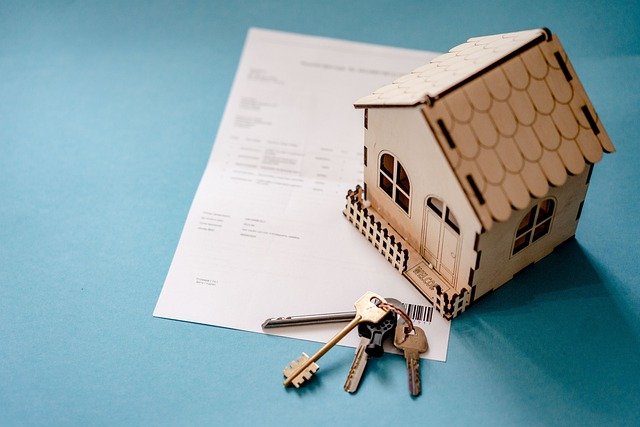Buy a Home Without a Mortgage in Australia: Complete Rent-to-Own Guide
Dreaming of owning a home but can’t qualify for a mortgage just yet? Rent-to-own schemes in Australia offer a practical pathway for aspiring homeowners. These contracts combine renting with a future purchase, allowing time to build your savings, improve credit, and secure financing—without giving up on your property goals. This guide outlines how rent-to-own works in Australia, including legal points, financial planning tips, and how to avoid costly mistakes.

The Australian dream of homeownership remains strong, but rising property prices and stringent lending requirements have made conventional mortgages increasingly challenging to obtain for many. Rent-to-own schemes, also known as lease-option agreements, provide an alternative pathway that allows prospective buyers to work toward owning a home without initially securing a traditional mortgage. This guide explores how these arrangements work in the Australian context, their benefits and risks, and what steps you should take to protect yourself if considering this option.
How Rent-to-Own Agreements Work in Australia
Rent-to-own agreements in Australia typically involve two key components: a standard rental agreement and an option to purchase the property at a predetermined price within a specific timeframe. The tenant-buyer usually pays an upfront option fee (often 1-3% of the property’s value) for the right to purchase later. Monthly payments typically include standard rent plus an additional amount that goes toward the eventual purchase, sometimes called a rent credit. These agreements generally run for 2-5 years, after which the tenant can exercise their option to buy using the accumulated rent credits toward their deposit.
Unlike in some other countries, rent-to-own schemes in Australia are not heavily regulated at the federal level, meaning arrangements can vary significantly between providers and states. This variation makes understanding the specific terms of any agreement crucial before signing.
Key Benefits of Buying Without a Traditional Mortgage
Rent-to-own arrangements offer several potential advantages for Australians struggling with traditional financing paths. For those with damaged credit histories or insufficient savings for a deposit, these schemes provide time to improve financial standing while already living in their future home. The purchase price is typically locked in at the beginning of the agreement, protecting buyers from rising property values in hot markets.
Self-employed individuals or those with irregular income streams who struggle to meet conventional lending criteria may find rent-to-own more accessible. Additionally, the transition from renting to owning happens gradually, allowing buyers to test-drive both the property and the neighborhood before making a final commitment. This can be particularly valuable in ensuring the home meets long-term needs before finalizing the purchase.
Major Risks and Downsides of Australian Rent-to-Own Schemes
Despite their appeal, rent-to-own arrangements carry significant risks. The total cost typically exceeds traditional purchase methods, with higher-than-market rent payments, substantial non-refundable option fees, and potentially inflated purchase prices. If the tenant-buyer cannot obtain financing when the option period ends, they may forfeit all additional payments and the option fee—potentially tens of thousands of dollars—without gaining equity.
The Australian rent-to-own market includes some predatory operators targeting vulnerable consumers. Some agreements contain unfair terms, such as the ability to evict and forfeit all payments for minor contract breaches or late payments. Property maintenance responsibilities are often unclear, potentially leaving tenant-buyers responsible for repairs on homes they don’t yet own. Additionally, if property values decline during the option period, buyers may be contractually obligated to purchase at the higher, predetermined price.
Legal Precautions Before Signing a Rent-to-Own Contract
Before entering a rent-to-own agreement, independent legal review is essential. Engage a solicitor experienced in property law to examine the contract thoroughly. Ensure the agreement clearly specifies the final purchase price, exactly how rent credits accumulate, and under what conditions they might be forfeited. The contract should also detail maintenance responsibilities, insurance requirements, and what happens if the property value changes significantly.
Consider consulting with a mortgage broker early in the process to assess your likelihood of securing financing when the option period ends. Some Australian states offer specific consumer protections for rent-to-own arrangements, so research your local regulations. Request a building and pest inspection before signing to avoid committing to a property with hidden problems, and ensure the current owner has clear title to the property without encumbrances that could affect your future ownership.
Step-by-Step Strategy for a Successful Rent-to-Own Purchase
To navigate a rent-to-own transaction successfully, start by researching reputable providers with established track records—seek recommendations and check reviews carefully. Before signing, negotiate favorable terms including a reasonable option fee, fair purchase price, and clear rent credit calculations. Create a detailed financial plan for the option period, focusing on improving your credit score and saving additional funds for the eventual purchase.
Document the property’s condition thoroughly at move-in with photos and a written report to avoid disputes later. Set calendar reminders for all key dates in the agreement, particularly when you need to notify the seller about exercising your purchase option. Throughout the rental period, maintain impeccable payment records and follow all contract terms precisely. About six months before your option period ends, begin the mortgage application process to ensure sufficient time to secure financing or explore alternatives if needed.
Rent-to-own arrangements in Australia represent a potential alternative path to homeownership for those unable to secure traditional financing immediately. However, they require careful consideration, thorough legal review, and disciplined financial planning to succeed. By understanding both the opportunities and risks these agreements present, prospective homebuyers can make informed decisions about whether a rent-to-own scheme aligns with their long-term housing goals and financial circumstances. With proper precautions and clear understanding of contractual obligations, these arrangements can bridge the gap between renting and owning for some Australians currently locked out of conventional mortgage markets.




